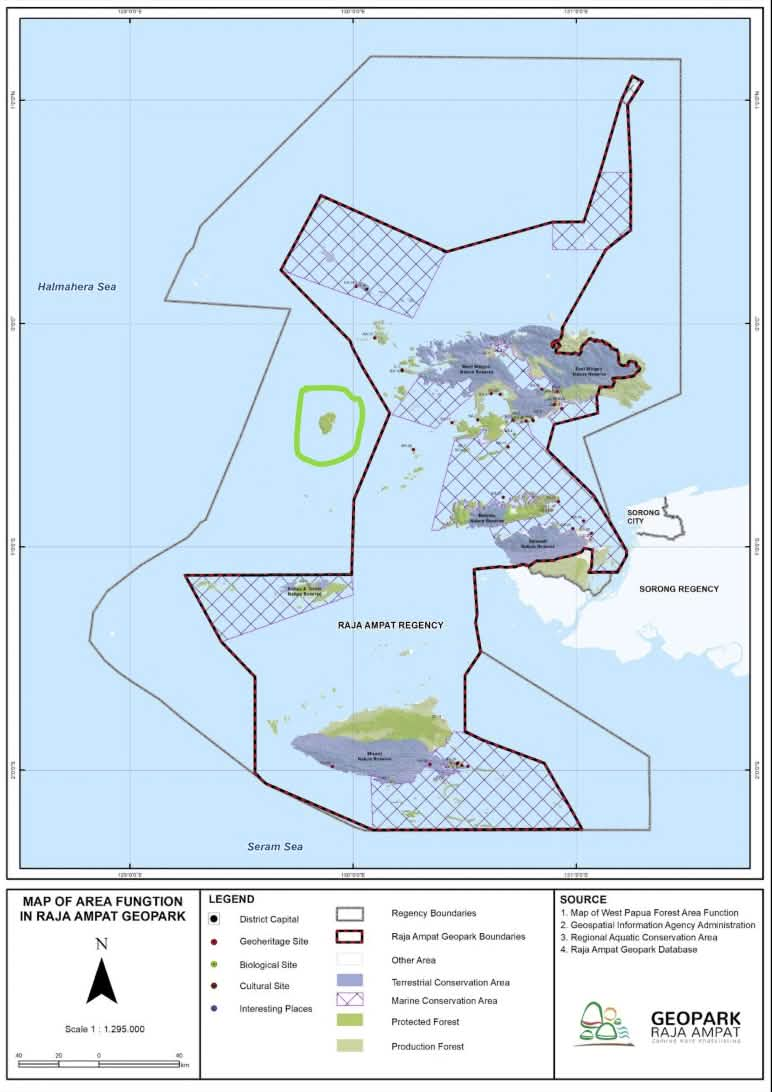Indonesia: Nickel mines in Raja Ampat shut down
Four nickel companies on the Raja Ampat Islands off Papua are being shut down. The government made this decision in the wake of nationwide protests against the destruction of forests and marine wildlife.
Update: September 2005
Since September 3, 2025, the state-owned nickel company PT Gag Nikel has resumed operations in the Raja Ampat Islands. In early June, the company was forced to temporarily suspend its work after large-scale protests in Raja Ampat and Jakarta.
The government has now even awarded PT Gag Nikel the “proper” certificate, claiming it demonstrates the company’s exemplary environmental program. Meanwhile, the law protecting small islands and coastal ecosystems continues to be ignored. The environment minister has even asserted that the law does not in fact prohibit open-pit mining.
Raja Ampat is one of the most beautiful places in Indonesia. These islands, located in the Coral Triangle off the coast of Papua, are renowned for their rich marine biodiversity and are especially popular among divers. The area is protected as the Raja Ampat Geopark.
Yet, it is difficult to believe that nickel ore is being mined there. Five mining companies currently operate in Raja Ampat. The consequences are devastating: forests are cleared, waste is dumped into the sea, and marine life is destroyed.
Indigenous Papuans have been protesting for months because they are losing their livelihoods as fishers and farmers. “We are witnessing the destruction of paradise and the last beauty of the small islands, legitimized by the Minister of Energy and Mineral Resources,” says KIARA, an organization specializing in coastal ecosystems.
The ore is shipped to the Maluku Islands, where it is processed in newly built nickel smelters to meet the growing demand from the steel and automotive industries. According to KIARA, Indonesia has increased nickel production from 800,000 tons to 2,200,000 tons per year since 2019—thus accounting for more than half of global production.
After another company received a permit, protests spread nationwide.
The government has now responded. Following a closed session on June 9, 2025, at the Presidential Palace in Jakarta, it revoked the operating licenses of four out of five companies. Environmental violations and deforestation were cited as reasons for the decision, according to Minister of Energy and Mineral Resources Bahlil Lahadalia. He emphasized that the marine ecosystem and the Raja Ampat Geopark must be protected.
The residents of the Raja Ampat Islands initially felt relieved.

However, the state-owned company PT Gag Nikel appears to be exempt. A few days ago, PT Gag Nikel was ordered to halt operations following the protests. Nevertheless, the minister is unwilling to give up the nickel, partly because Gag Island is not located within the Geopark.
Environmental organizations remain dissatisfied. In principle, mining on small islands is highly problematic from an ecological standpoint and has been prohibited by law since 2014. In practice, however, minerals are extracted on 35 small islands. According to the anti-mining network JATAM, a total of 195 mines are active there, “all in the name of electric mobility and economic growth.”
“The increasing production of electric vehicles is directly linked to the destruction of coasts, seas, and small islands. As a result, both the environment and the lives of people in mining areas suffer. This harsh reality shows that only economic growth and legal certainty for companies determine government policy—not the protection of nature and human rights,” stated KIARA in a press release.
For JATAM, the mine on Gag Island exemplifies land grabbing and the power of the oligarchy.
1. Repeal all laws that legalize mining on small islands (including the Mineral and Coal Act).
2. Introduce strict and comprehensive legal protection for small islands.
3. Abolish all regional spatial regulations that facilitate mining on coasts and small islands.
4. Review and revoke all existing permits for mining on small islands.
5. Do not issue any new permits for mining on small islands.
Further information:
Rainforest Rescue: Are the Raja Ampat Islands being destroyed for nickel?
Mongabay: Indonesia halts most nickel mining in Raja Ampat but allows one controversial permit
KIARA (Indonesian): Destruction of a paradise and the last beauty of the small islands

